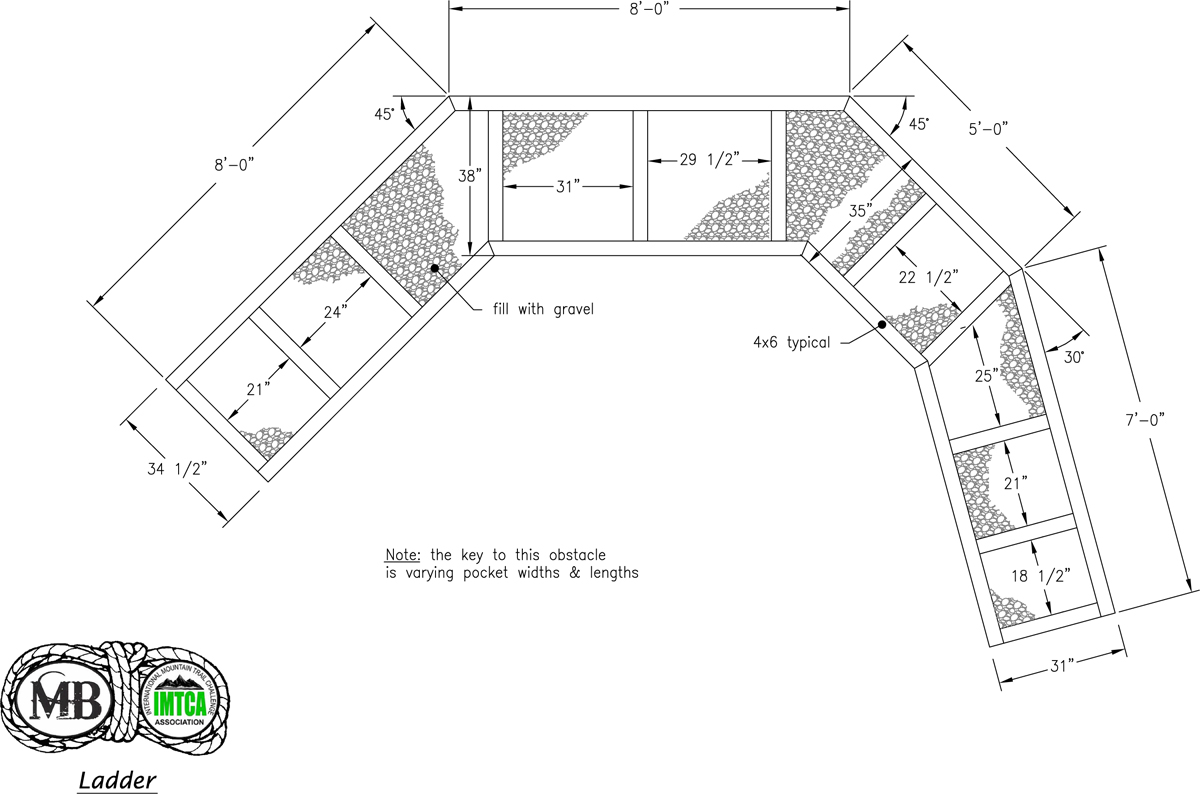Careful Training Leads to a Bold, Confident Horse
by Mark Bolender

Riding a horse through rugged mountain trails is something many people do on a daily basis, especially in the western United States. It’s anybody’s guess what sort of obstacles you and your horse might encounter on these trails, from fallen tree limbs to deep washouts. An experienced horse and rider can navigate such obstacles just fine if they have the proper training and experience. However, few things in horseback riding are more dangerous than being unprepared for these challenges.
Navigating difficult obstacles along a backcountry trail is actually the backbone of the sport mountain trail. It began as an informal competition just over a decade ago and has grown into an international sport complete with rules and regulations. Horse and rider compete for points while negotiating difficult challenges, the sort that might actually be found on a trail ride such as rocks, logs, ponds, bridges and a host of others.
To successfully compete in mountain trail and smoothly navigate challenging obstacles a proper relationship between horse and rider will be required. Suitable training takes time and effort, for both horse and rider and it results in a partnership where the horse displays boldness and confidence as it picks its way through each obstacle. The horse will be willing to do so because it trusts the rider and takes cues to perform tasks it would normally run away from. When performed properly, with the unity that only good training can accomplish, horse and rider move along obstacles with a finesse that makes it appear two individuals are working as one.
While teaching a clinic recently, several horses were having a struggle with an obstacle called the ladder. This obstacle is made up of a number of boxes of various sizes and the horse must think it through, deciding carefully where to place its feet. Some riders were a little frustrated because their horses could not get the idea that each stride needed to be different. The horses kept stepping on the 4×6’s making up the ladder, or they would skip a box which equals a one point deduction. Here are some tips that have worked for me in training the horse to properly walk through the ladder obstacle.
First, begin on the ground in-hand and take your time. It will work best if you start with the horse on your right so you will pull it into the bend of the obstacle. Approach the obstacle and let the horse drop its head and think it through. Next, have the horse step into the first box and stop. When the horse is ready, it will take the second step into the obstacle; do not let it step onto the 4×6 divider. Now coach the horse to step with all four feet into the obstacle. Don’t worry about the fact that the horse will likely step out with at least one, but more often both, back feet. Just let the horse stand on a loose lead rope until it is completely relaxed. Don’t try to have it move its feet into the obstacle once they are out. Now ask the horse to move forward and stop at the end with at least two feet in the obstacle boxes. Let the horse stand again and relax before asking it to exit the obstacle.
This process will vary greatly between individual horses—be patient! Let the horse stand and relax once it exits the obstacle. Now, ask the horse to walk back into the obstacle from the same direction as you started and stop when it has all four feet inside the obstacle. Exit the obstacle and go work on another challenge for a few minutes before returning if the horse has tried hard and is relaxed. Even if the horse has not been completely successful, but has given a solid try it is time to walk away because the horse will feel rewarded and that is what we want. Now, come back to the obstacle and work on it until the horse will walk through with all four feet walking into every box. Last, mount up and ride using the exact same steps as outlined for in-hand. Soon the horse will be walking through the ladder with style and finesse regardless of its size. Be careful not to override the horse. What I mean by this is let it figure out where to place its feet. If you override your horse you will always need to place its feet. If you humble yourself and let it learn where to put its feet you will have a much better partnership. Happy Trails and Bolender Blessings.

Mark Bolender is the nation’s leading expert in Mountain Trail, Extreme Mountain Trail, and Competitive Trail. He’s a three-time National Champion and one of the most popular trainers in the country. Today, Mark’s unique style of horsemanship has made the Bolender brand synonymous with these disciplines.
Mark has written for numerous national magazines and authored the popular book, Bolender’s Guide to Mastering Mountain and Extreme Trail Riding. Mark and his horse Checkers hold the sport’s all-time highest honors. Checkers was distinguished by becoming the 2020 Breyer Horse.
Mark and Lee Bolender founded the International Mountain Trail Challenge Association (IMTCA) to promote these sports. Today, the IMTCA trains judges, coordinates activities, and maintains certifications around the world.
Mark owns and operates Bolender Horse Park in Washington State. Mark has also designed and built Mountain Trail courses around the world.

